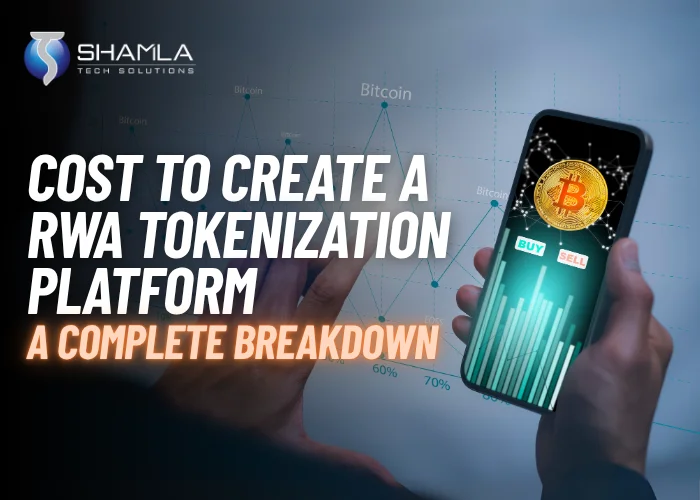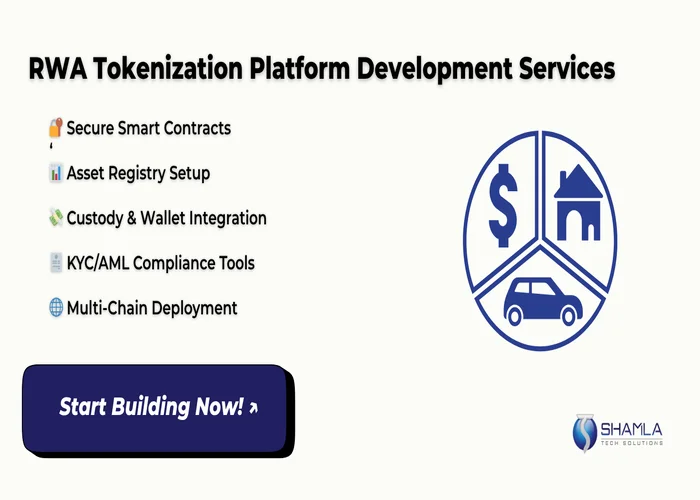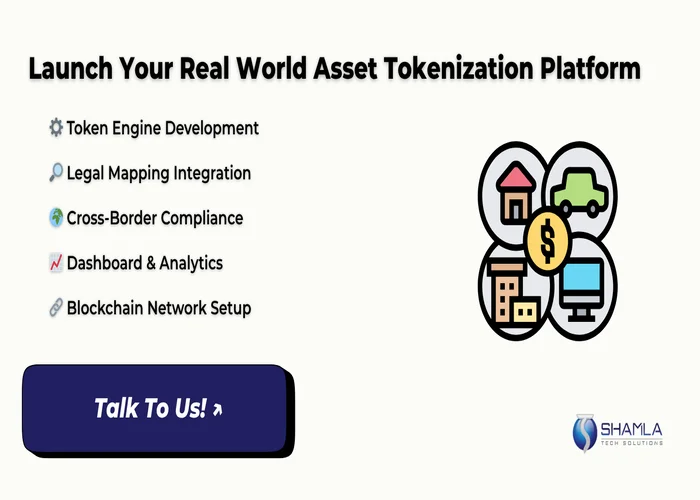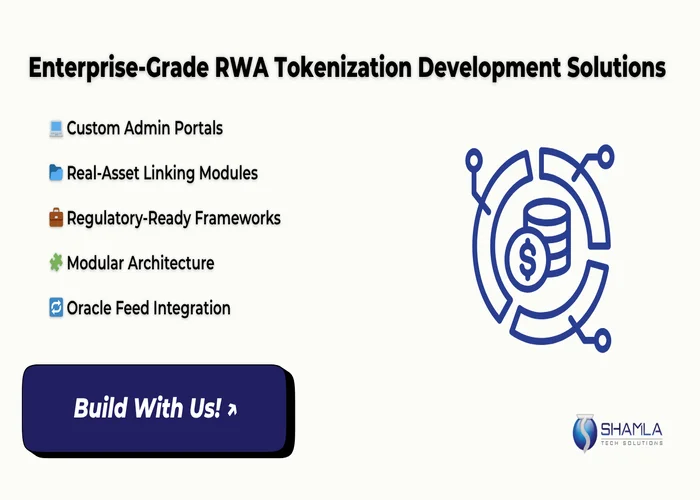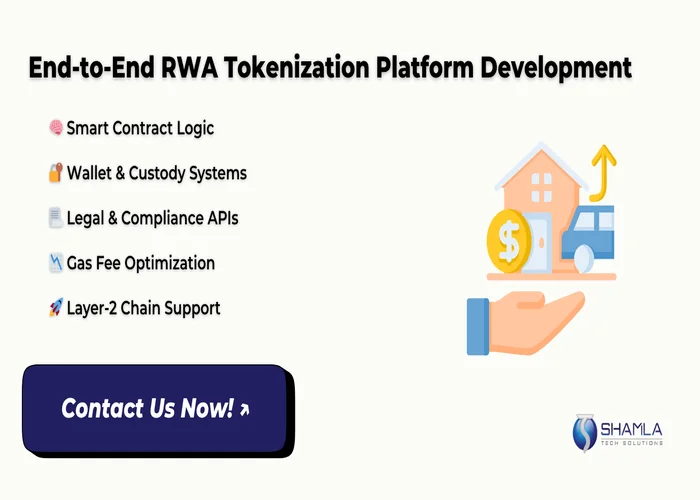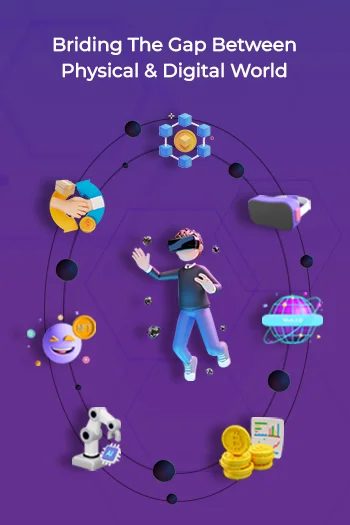Adoption of real world asset tokenization worldwide has surged as a performance-driven sector. Engineers build ledgers, smart contracts, and custody layers to map tangible items into digital tokens. The cost to create a RWA tokenization platform is between $100,000 and $250,000 for a full-scale, production-ready solution. By focusing on expense categories – code writing, security testing, market data feeds, and compliance controls – organizations avoid budget gaps.
This article goes beyond basic terms to analyze every spend factor in depth. Accurate financial projections prevent funding shortfalls, helping teams plan resources and future timelines before writing a single line of code.
Cost to Create a RWA Tokenization Platform: Core Components & Pricing Structure
1. Tokenization Engine - $20,000 to $40,000
2. Identity and Compliance - $10,000 to $30,000
Identity and compliance modules ensure platform safety. The identity layer handles KYC and AML checks, verifying user documents and flagging risks. Integration of third-party services speeds validation. Costs cover API fees, developer hours, and maintenance over time. Modular design makes future updates simple. Firms often budget for:
- KYC provider fees
- AML screening subscriptions
- Data storage and encryption
These items shape how much does RWA platform development cost in this module. Clear estimates in this scope refine the budget. Understanding RWA tokenization platform development cost for compliance avoids hidden fees and delays and gets to predict the cost to create a RWA tokenization platform more accurately.
3. Asset Registry & Legal Frameworks - $12,000 to $35,000
4. Admin Dashboard & User Portals - $10,000 to $25,000
5. Custody or Wallet Integration - $10,000 to $25,000
Custody or wallet integration secures token storage. Platforms link to hardware and software wallets and hot or cold custody services. Costs include:
- Wallet SDK licenses
- Hardware module purchases
- Integration developer hours
Security modules enforce key management and recovery. Real charges depend on service tiers. Teams ask RWA tokenization platform development cost early to match custody needs. By detailing fees, organizations discover how much does RWA platform development cost for secure storage. This focus refines the cost to create a RWA tokenization platform and prevents late overruns. Precise custody budgets avoid risk.
6. Blockchain Networks - $8,000 to $20,000
7. APIs & Hosting - $8,000 to $20,000
Third-party APIs power live pricing and payments. Integrating oracles and gateways adds direct charges and dev time. Budget covers:
- Oracle subscription fees
- API call rates
- Payment gateway transaction charges
Teams face hosting costs for servers and containers. Cloud infrastructure fees include compute, storage, and bandwidth. Docker setups and CI/CD pipelines require work. Firms use cost breakdown for real world asset tokenization development to assess these sums. Clear API and hosting figures prevent surprises. Accurate numbers for these external services anchor the overall budget before moving to production. Deployments on multi-region zones raise costs. Container monitoring and backups need fees.
8. UI/UX Design & Audits - $7,000 to $20,000
UI/UX design defines user ease and brand style. Designers craft layouts, icons, and flows. Work includes wireframes, prototypes, and user tests. Budget covers:
- Designer hourly rates
- Prototype tool subscriptions
- Testing lab fees
Smart contract auditing catches code flaws. Auditors review logic, gas use, and upgrade safety. Development is guided by token standards such as ERC-3643 and ERC-1400, which define rules for compliance, transfers, and asset representation. Setup fees and license costs apply. Firms use cost breakdown for real world asset tokenization development to plan these items. Pinpointing design and audit costs stops overruns. With exact figures on UI, audits, and standards, teams lock budgets before coding. User feedback drives updates.
Industry Focus: Real Estate, Commodities, and Private Equities
1. Real Estate Tokenization Mechanics and Costs
Tokenizing property assets starts with on-chain token rules that lock ownership rights. With real estate tokenization how it works, teams build a ledger mapping each share to a legal deed. Cost to create a RWA tokenization platform here covers developer time for contract coding, gas tuning, and test deployments. Asset valuation links external price oracles; database mappings ensure on-chain records match legal registries. Integration with county or land-title APIs carries license fees. Compliance engines adapt to USA, UAE, and India rules, adding KYC, AML, and geo-checks.
Early architecture must allow upgrades without breaking live tokens. This module’s RWA tokenization in real estate investment overhead spans code labor, data subscriptions, and audit fees. Benefits of real estate tokenization include faster liquidity and fractional shares. For many firms, this cost to create a RWA tokenization platform defines initial budgets. Teams working with real world asset tokenization companies and services see clearer estimates. Real estate tokenization is the future of investments, enabling smaller investors to access commercial and residential projects without big down payments.
2. Commodity Tokenization Cost Drivers
Tokenizing assets like gold bars, oil barrels, and energy credits involves digitally representing physical holdings through blockchain-based tokens. Teams select secure vault or warehouse partners and integrate inventory APIs. The cost to create a RWA tokenization platform in this area includes storage audit fees, delivery logistics, and live feed subscriptions. Oracles relay spot prices; tiered API plans affect monthly bills. Developers build middleware that checks warehouse receipts, updates token balances, and triggers redemptions. Security modules enforce multi-sig approvals for withdrawals. This section’s RWA tokenization platform development cost covers integration hours, oracle subscriptions, and logistics bonds.
Real world asset tokenization companies offer white-label services with fixed API rates; custom builds need extra dev time. Firms comparing real world asset tokenization services weigh per-call fees against flat licensing. Accurate breakdown of the cost to create a RWA tokenization platform here avoids surprises in commodity markets. Standard modules include token minting, burn functions, and manual reconciliation tools. Teams lock in service tiers to control formula-based costs.
3. Private Equities & VC-Backed Asset Tokenization
Issuing shares in private firms via tokens demands custom legal wrappers. The cost to create a RWA tokenization platform covers lawyer fees for shareholder agreements and contract coding hours. Investor dashboards display cap tables, funding rounds, and payout schedules. Backend integration with payment rails handles fiat and crypto subscriptions. Role-based access control and audit logs secure workflows. Monthly maintenance covers database backups, API health checks, and token-mint triggers.
RWA platform development cost for this module tracks counsel fees, UI build time, and testing cycles. Real world asset tokenization companies often bundle dashboard templates, while real world asset tokenization services charge hourly for customization. Companies rely on detailed cost breakdowns for real world asset tokenization development to evaluate vendors. Key functionalities include live share tracking, KYC-restricted purchase modules, and automated regulatory reporting. With clear figures, teams budget accurately for investor management tools and legal updates.
4. Comparison of Top Real World Asset Tokenization Companies
Five major real world asset tokenization companies dominate the market with varied pricing. Company A uses flat monthly fees plus per-transaction gas fees. Company B offers revenue share on token trades with lower base costs. Company C sells white-label platforms with fixed integration fees; Company D builds custom stacks billed by hours; Company E provides hybrid models. Real world asset tokenization services vary in support tiers, SLAs, and customization. Some include built-in oracles, wallet SDKs, and compliance modules; others charge extra for each add-on.
Analyzing real estate tokenization solutions highlights variations in data integration and geographic regulatory compliance features. Firms evaluate white-label vs custom builds by comparing setup costs and upgrade paths. Feature matrices show standard items, token mint/burn, KYC, dashboards, versus premium options like multi-chain bridging and secondary market integration. Security audit bundles add fixed sums or hourly rates. This point helps readers gauge how much does RWA platform development cost across providers. Clear side-by-side layouts speed vendor selection.
5. Pricing Trends and Future Drivers
Growing security needs push audit and pentest costs higher. Real estate tokenization platforms now mandate multi-vector testing and continuous monitoring. Modular compliance engines tuned to regional laws (USA, UAE, India) add licensing fees per jurisdiction. As real estate tokenization gains traction, token standards evolve, raising integration work. Teams ask how much does RWA platform development cost to include layer-2 networks and cross-chain bridges.
Demand for secondary market support, order books, matching engines, adds development time and hosting charges. Real world asset tokenization companies increasingly offer pay-as-you-go services, replacing upfront licenses. Real world asset tokenization services now bundle API calls, custody plugins, and UI kits in tiered plans. Firms planning budgets use the breakdown of cost to create a RWA tokenization platform to track these rising items. RWA tokenization in real estate investment now demands agile billing models. The benefits of real estate tokenization extend with fractional trading, but costs scale with security and compliance. Real estate tokenization is the future of investments, and pinpointing fees today avoids budget overruns tomorrow.
Total Budgeting Guide: How to Calculate Your RWA Tokenization Development Expenses
1. Budget Planning Frameworks
Use a clear framework to plan your budget. First, list development phases: prototype, audit, launch and ops. Estimate each cost with historical data. Include:
- Smart contract coding
- Oracle integration
- Legal and compliance
- Infrastructure and hosting
Track spending against milestones. Use tools like spreadsheets or budget software to record figures and forecast cash flow. This approach clarifies how much does RWA platform development cost and offers a detailed cost breakdown for real world asset tokenization development. Regular reviews let you adjust estimates early, preventing overspend and ensuring funds cover each phase from code to live release, with phase budgets and risk buffers.
2. Startups: MVP vs Full-Featured Builds
Startups face trade-offs between a minimal viable product and full-featured builds. For MVP, focus on core modules: token mint/burn, simple collateral checks and a basic oracle feed. Full builds add governance panels, multi-collateral support and cross-chain bridges. Analyze feature scopes to control cost to create a RWA tokenization platform. In real world asset tokenization, lean MVPs reduce upfront spend but may need refactoring later. Use open tools and token standards to speed delivery. Bullets help track features:
- Core contract logic
- Oracle setup
- UI module
- Bridge adapter
3. SMEs & Enterprises
SMEs leverage cost flexibility via open source libraries and shared node services. Enterprises require layered architecture, dedicated compliance engines and high-availability chains. For SMEs, budgets adjust as usage grows while minimizing initial spend. Enterprises budget for license fees, legal counsel and regional audits. This structure informs you the details of the cost to create a RWA tokenization platform and shows how much does RWA platform development cost under different scopes. Use modular design: swap oracle providers or add collateral types without full rewrites. Outsource smart contract work to control labor costs. Bullets outline key budget lines:
- Open source nodes
- Compliance modules
- High-availability servers
- Audit retainers
4. Cost Optimization & Hidden Fees
Optimize expenses by using modular development and token standards to reduce custom code. Leverage outsourcing for stable contract builds, gas audits and oracle setup. Hidden costs often include licensing fees, jurisdictional legal counsel and platform audits. Track these via detailed budget templates. Tools like spreadsheets or finance apps help calculate break-even points for tokenized investments. Bullets list tools and hidden costs:
- Licensing and permits
- Regional compliance checks
- Audit and insurance
- Governance token setup
This plan clarifies the cost to create a RWA tokenization platform and covers real world asset tokenization without surprises, ensuring you stay within budget.
Conclusion
Major cost drivers include audit fees, oracle integration, and legal compliance. Budget essentials cover prototype vs full-feature scope, infrastructure expenses, and hidden fees. Detailed phase-based forecasts ensure transparency. Custom cost planning for your RWA tokenization platform development cost can prevent overruns, secure project success, and seamless long-term risk mitigation.
Shamla Tech is a real world asset tokenization development company offering the best RWA tokenization platform development cost model. Our stablecoin creation services include modular contract builds, oracle integration, compliance engines, and audit support. We tailor budgets, deliver secure token flows, enabling your asset tokenization project to scale with fixed costs.

